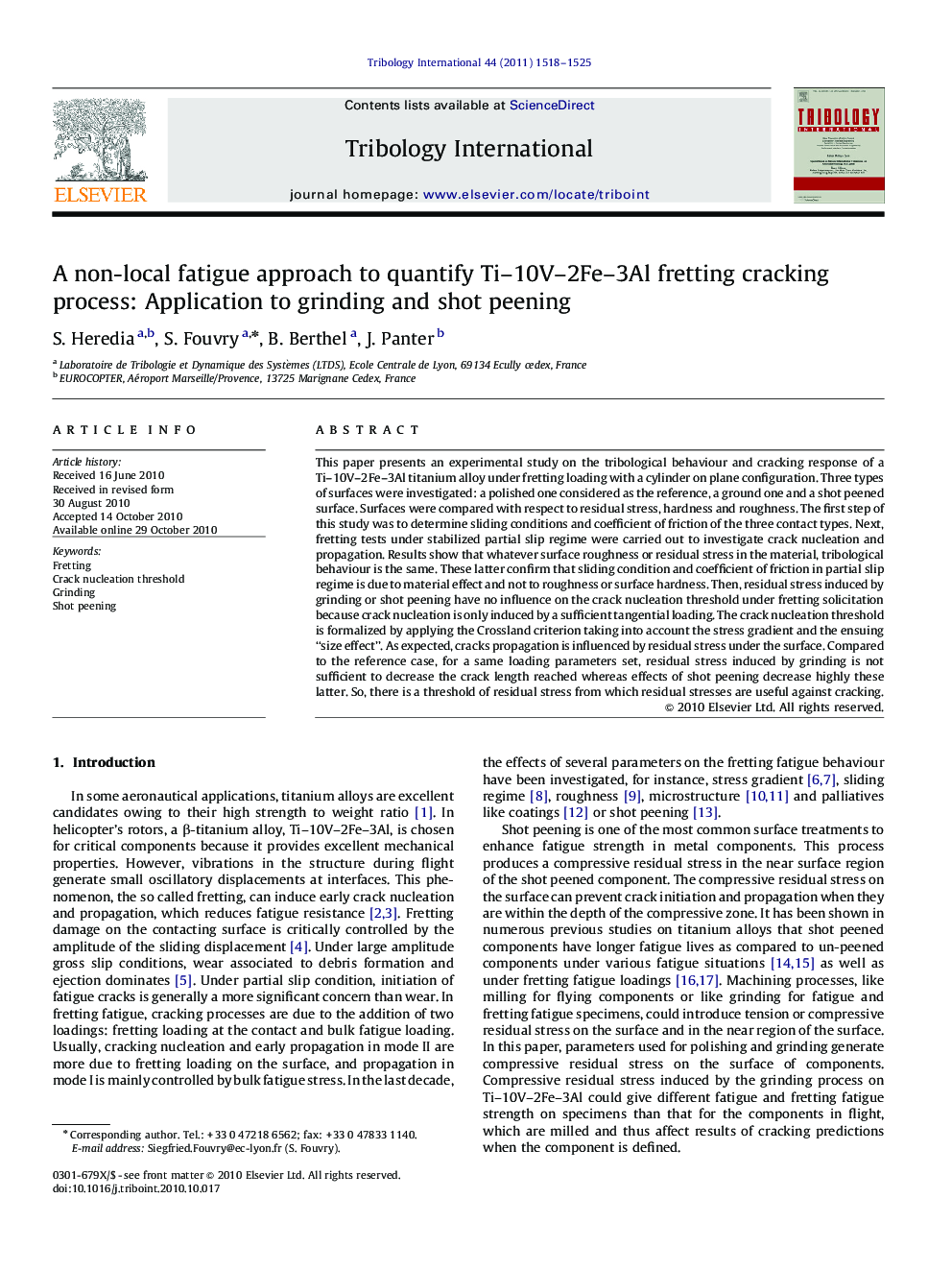| کد مقاله | کد نشریه | سال انتشار | مقاله انگلیسی | نسخه تمام متن |
|---|---|---|---|---|
| 615459 | 881445 | 2011 | 8 صفحه PDF | دانلود رایگان |

This paper presents an experimental study on the tribological behaviour and cracking response of a Ti–10V–2Fe–3Al titanium alloy under fretting loading with a cylinder on plane configuration. Three types of surfaces were investigated: a polished one considered as the reference, a ground one and a shot peened surface. Surfaces were compared with respect to residual stress, hardness and roughness. The first step of this study was to determine sliding conditions and coefficient of friction of the three contact types. Next, fretting tests under stabilized partial slip regime were carried out to investigate crack nucleation and propagation. Results show that whatever surface roughness or residual stress in the material, tribological behaviour is the same. These latter confirm that sliding condition and coefficient of friction in partial slip regime is due to material effect and not to roughness or surface hardness. Then, residual stress induced by grinding or shot peening have no influence on the crack nucleation threshold under fretting solicitation because crack nucleation is only induced by a sufficient tangential loading. The crack nucleation threshold is formalized by applying the Crossland criterion taking into account the stress gradient and the ensuing “size effect”. As expected, cracks propagation is influenced by residual stress under the surface. Compared to the reference case, for a same loading parameters set, residual stress induced by grinding is not sufficient to decrease the crack length reached whereas effects of shot peening decrease highly these latter. So, there is a threshold of residual stress from which residual stresses are useful against cracking.
Graphical AbstractFigure optionsDownload high-quality image (49 K)Download as PowerPoint slideResearch Highlights
► Tribological behaviour is independent from machining and treatment processes.
► Polishing, grinding and shot peening show the same crack nucleation threshold.
► Shot peening treatment decrease cracks depth compared to polishing and grinding.
► A process volume is needed to predict cracking risk using the Crossland criterion.
Journal: Tribology International - Volume 44, Issue 11, October 2011, Pages 1518–1525